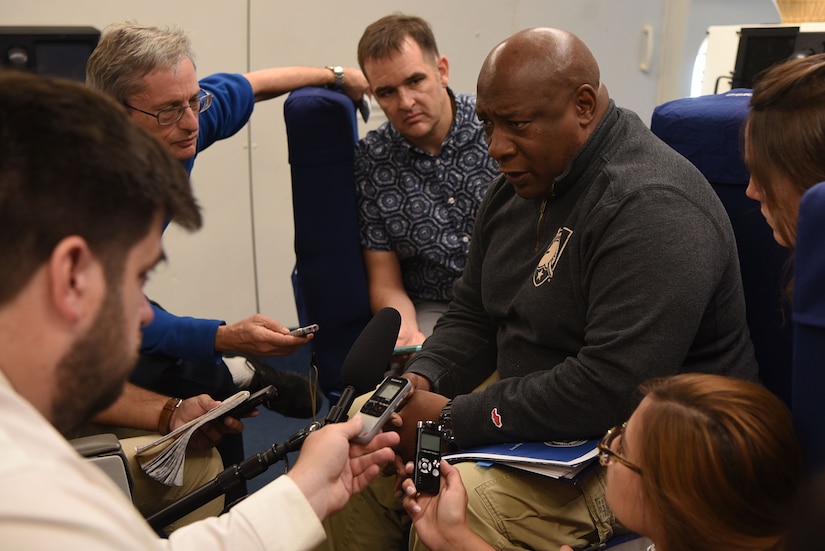By Jim Garamone, DoD News, Defense Media Activity
NEW DELHI -- A decade ago, U.S. arms sales to India amounted
to virtually nothing. Today, the United States is the second-largest arms
supplier to India, and U.S. officials say they hope to increase that business.
Army Lt. Gen. Charles Hooper, the director of the Defense
Security Cooperation Agency, spoke to reporters while traveling to India with
Defense Secretary James N. Mattis. His agency is responsible for foreign
military sales.
India is modernizing its military and the United States would
like to compete for those sales, he said. “There are four values that govern
our relationship with India, and our relationship with all our partners: …
transparency, responsiveness, integrity and commitment,” the general said.
Transparency means the agency shares all the information
about systems and associated costs with its partners. This allows other nations
to make informed decisions on the types of capabilities they need.
‘We’re Very Confident … They’ll Choose American Systems’
“We’re very confident that, when given all of the
information that they need, they’ll choose American systems and American
services,” Hooper said.
Responsiveness is another key. The general stays in constant
touch with his partners. In India’s case that is the director general for
acquisition. “Every time I see him, I provide him with a spreadsheet that
updates … the status of all of our systems,” Hooper said. “And we have
discussions on how we can better strengthen the partnership.”
Integrity is a key value that separates the U.S. approach to
security cooperation from others, he said.
“Integrity means, quite simply, our books are always open,”
Hooper said. “We don't charge one penny more than we have to for the finest
systems and the finest services in the world. The books are always open, and we
can account for every penny that our partners spend.”
The U.S. is committed to providing goods and services at the
point of sale, and to forging and strengthening a long-term relationship, the
general said.
“We found that when we follow those four values with our
Indian partners, it helps to support, to strengthen that relationship,” he
said.
Hooper cannot comment on possible sales to India, but he
said he believes that no matter the domain, any U.S. system would bring
enormous capabilities and be economically competitive. “What I can say is, I
expect some very fruitful discussions,” he said. “All of our systems are the
best in the world, and I'm sure are very competitive to suit and meet the
requirements of our Indian partners.”
India has already bought U.S. C-17 Globemaster III aircraft
and AH-64 Apache attack helicopters. One aspect of the current U.S.-Indian
talks is the communications compatibility and security agreement. Once signed,
a much larger range of U.S. weapons systems would be available to India.
Over the years, first the Soviet Union and then Russia were
the largest arms suppliers to India. Russia remains the biggest supplier,
mainly because of contracts for legacy systems.
“We're confident that when our partners take a look at the
capabilities that we're offering as opposed to whatever capabilities they
previously been committed to, that … U.S. capabilities will stand
head-and-shoulders above all of them and will become the selection of choice,
and we will become their partner of choice,” Hooper said.









No comments:
Post a Comment